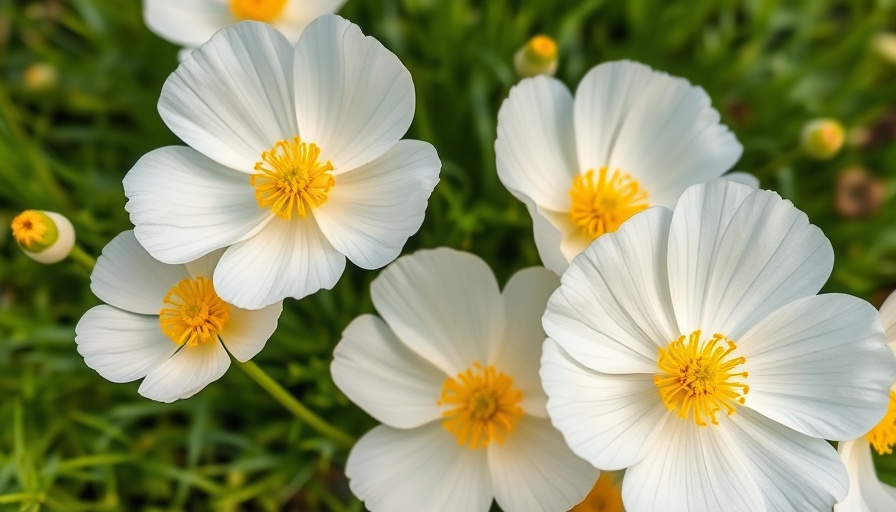
Unveiling the Beauty of California Tree Poppies
The California tree poppy, or Romneya coulteri, is more than just a flower—it’s a symbol of the diverse flora that graces the coastal landscape of southern California and Baja California. Revered for its stunning crinkly white blooms that resemble fried eggs, this perennial not only adds charm but also appeals to garden enthusiasts who value sustainability. Each flower can grow up to eight inches wide, attracting positive attention from passersby while being a low-water option for eco-conscious gardeners.
Why California Tree Poppies are Essential for Local Gardens
These lovely plants thrive in USDA Zones 8 to 10 and flourish in sandy loam or organically-rich, well-draining soil—making them perfect candidates for xeriscaping projects. As they recover excellently in soil rejuvenated from wildfire damage, they prove to be an intelligent choice for both restoration efforts and general landscaping. With their natural resilience, California tree poppies not only contribute to the beauty of gardens but support local biodiversity and ecosystems.
Growing Tips for Garden Enthusiasts
When introducing California tree poppies to your garden, consider these essential growing tips:
- Planting Time: Aim for early spring, ensuring the risk of frost has passed.
- Sunlight: Opt for full sun exposure to encourage robust growth.
- Watering: Though drought-tolerant once established, regularly watering them during their early growth phase can boost their health.
- Soil Testing: Conduct soil tests to understand the pH levels (ideally between 5.0 and 8.0) and nutrient composition, which will give you insight into necessary amendments.
Designing Your Dream Garden with California Tree Poppies
California tree poppies thrive in garden spaces that showcase their towering six to eight feet height and wide spread. They are particularly stunning when massed in drifts, allowing their unique shapes and warm centers to create a striking visual impact. Whether incorporated in a native plant garden or used to complement more traditional flowering plants, these poppies can transform the aesthetics of outdoor spaces and offer a backdrop for other flora to shine.
Addressing Common Gardening Challenges
Though beautiful, California tree poppies can face challenges such as pests and diseases. Regularly inspect plants for signs of infestation and maintain good garden hygiene. Understanding local climate conditions can also inform practices that bolster the health of these plants, such as appropriate watering schedules during drier seasons or utilizing organic gardening methods to keep pests at bay.
Final Thoughts: Nurturing Nature in Your Own Backyard
By incorporating California tree poppies into your garden, you are actively participating in fostering a habitat that supports local wildlife, including important pollinators. Their aesthetic appeal, coupled with their low maintenance nature, allows you to enjoy the beauty of these unique blooms without extensive effort. So, dive into your gardening projects—these delightful flowers are waiting to flourish!
As you plan your gardening journey, consider incorporating a variety of plants to create a dynamic and inviting space. From choosing native pollinator-friendly flowers to designing functional garden layouts, every choice creates a vibrant ecosystem that promotes overall well-being. Start your journey to a more sustainable garden today!
 Add Row
Add Row  Add
Add 




Write A Comment